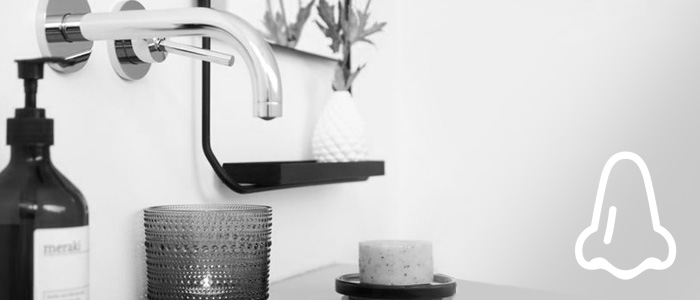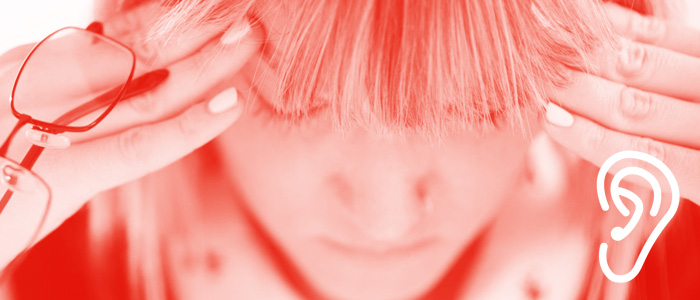Tips from PLASTARC for taking into account the different ways we experience space.

Every time you enter a space, a rush of information about it is delivered to your brain through your senses. What does the space look like? What sounds are coming from it? What does it smell like? Is it hot or chilly, humid or dry? We humans are full-body sensors, and our feelers are out at every waking moment, helping us understand the places we go.
These same inputs also work to influence our mood, our behavior, and ultimately our well-being in any given space. Multisensory design acknowledges that people experience and react to space in many ways, subtle and obvious, consciously and unconsciously. The retail, entertainment, and hospitality industries have long incorporated multisensory elements into their environments; now workplace may finally be catching up.
This is a very good thing: many of us spend so much time at work that factors like the volume and quality of sound we hear, whether we feel too warm or too cold, and even how easily we can navigate our way through the building can have a substantial long-term effect on both our mental and physical health, as well as how happy and productive we are at work.
We find the five basic senses — as we learned in kindergarten — to be a simple framework for increasing our attention to multisensory design features. Here’s a deeper dive into the range of inputs our five senses perceive, and some of the many multisensory options designers and occupants can consider employing to engender increased wellness in the workplace.

Sight
While sight is usually considered the primary architectural and spatial sensibility, it’s actually composed of many different facets that go far beyond aesthetics. Visual access to daylight and nature, for example, help us maintain consistent circadian rhythms (which are tied to physical, mental, and behavioral health), and exposure to sunshine gives our bodies the opportunity to synthesize vitamin D, which promotes bone health, modulates immune function, and reduces inflammation. Access to natural light is imperative for a healthy multisensory workspace.
The colors of surfaces and objects can also have a significant effect on occupant performance, satisfaction, comfort, and health: warm-toned, natural materials like wood spark positive biophilic effects. Additionally, avoiding a sense of crowding in the workplace and providing clear sight lines between coworkers helps contribute to productive, healthy work environments.

Smell
You’ve probably heard that scent is the sense most strongly tied to memory — that’s why retail and hospitality environments have long used signature scents to create memorable multisensory experiences for their customers. In the workplace, too, pleasant scents can help create a strong, positive association between a space and its occupants, and make the office feel less sterile and more personal.
A key space that benefits from olfactory consideration is, understandably, the restroom. PLASTARC has seen ahead-of-the-curve conference organizers bring scented candles and soap into the restrooms of third-party spaces to help attendees form a positive association with their surroundings. This approach is popular in coworking environments as well. Scent solutions are low-cost, yet demonstrate clearly to occupants that you’ve considered their full multisensory experience.

Taste
Taste is likely not the first sense to come to mind when you think of workplace design, but food and drink do play an important role in creating community at work. Providing good coffee, for example, makes the statement that you’re doing more than the bare minimum for your staff, and that you understand caffeine is a workplace necessity for many! At the opposite end of the day, happy hours make the office a social place: one that’s about more than just getting work done. Snack-wise, an eclectic and healthful selection of flavors and textures available in the pantry or vending machine sends the message that you want there to be something for everyone, and that people should feel encouraged to try something new. Ensuring that occupants have access to interesting, healthy food and drink is a key facet of addressing their well-being. We were just visiting the Zappos office in Las Vegas, where they offer healthy snacks from a vending machine where the proceeds go to charity, and great drinks are free.
Eating and drinking together is universally fun, and proven to help people bond. Providing amenities and activities that revolve around the ritual of meals and refreshments is a great way to attract and retain talent, as well as a means of encouraging people to share personal experiences (i.e.: not talk about work for once) and connect across cultures.

Sound
After sight, sound is probably the most talked-about sensory experience in the workplace — and often that talking comes in the form of complaints. Sound in the office can be relaxing or energizing, but it’s more closely associated with noise and distraction. These days, those frustrations can be exacerbated by open office layouts and the trend of outfitting spaces with harder, more reflective materials. Research on the effects of the low frequencies (sometimes perceived as vibrations) that emanate from much modern office equipment suggests that even these barely-perceptible sounds can negatively affect the nervous system and cause sleep disorders.
There are a few ways that both the positive and negative effects of sound can be addressed in the work environment. Playing brand-appropriate music in common spaces — without vocals if you’re looking to concentrate — can help to set your workplace apart, for example. Allowing occupants to customize music in selected spaces is a way to provide them with personal control of the workplace. For distracting noises, using sound-masking technologies and materials facilitates increased concentration and confidentiality when needed, and can help differentiate heads-down, focused spaces from social or collaborative ones. As is the case with smell, sound is a key consideration in restroom design.

Touch
For the purposes of workplace design, we consider “touch” to include the things we actually come into contact with as well as the surfaces, boundaries, and environments within our view that we might simply imagine inhabiting or touching. This means that your sense of touch could be employed by sitting on a hard chair or a soft couch — or by seeing them across the room and predicting how it would feel to take a seat. Your sense of touch is even at work when you experience the humidity level in a space, or react to its airflow or temperature.
Choosing natural materials for furniture and decor when possible (such as fabric versus plastic) can make for a more calming space. Offices kept too warm can contribute to “sick building syndrome” symptoms that negatively impact well-being, productivity, and people’s desire to be there. The temperature standards originally developed by building engineers in the mid-20th century, used to determine air flows, assumed the average employee was a man in a three-piece suit — now a rapidly disappearing fashion standard in our work environments! Ensuring that we’re designing for current occupants when it comes to touch — and all the other senses — is key.
While we know of these excellent, often simple ways to appeal to people’s senses and encourage their well-being, the process and ramifications of how our bodies and brains relate and react to the outside world is far more complex.
Further research into this topic could take one all the way to what some call the source of empathy: our mirror neurons. These fire when we perform an action ourselves and when we simply observe another person performing the same action. The implications of this process in the workplace appear limitless, especially vis-a-vis multisensory design.
Take just this very commonplace example to start: PLASTARC’s research has shown that simply seeing each other more in the workplace — achievable through the use of open work spaces, clear lines of sight, and multiple circulation routes — helps employees bond, more freely share ideas, and feel overall more satisfied at work. Sounds like a healthy investment.



Another winner for Melissa. We all sort of sense this is so obvious. But, what Melissa has done with this article is make it real and give us designers a roadmap and check list to work from. Many thanks. Well put together in an easy to follow format.
This is a really interesting article. We work on many office designs and fit-outs and carry out research on issues in the workplace. It seems that sound (or noise!) is one of the biggest problems. A recent study by Steelcase found that the average employee is sidetracked every 11 minutes and then takes 23 minutes to return to their previous level of concentration. NPR.org also cite additional research from Alan Hedge at Cornell, who found that 74 percent of workers face “many” noise distractions.